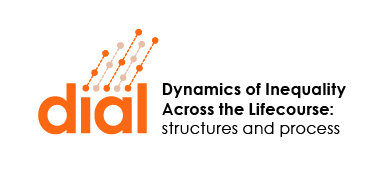by Paul Hufe, University of Bristol
Inequality is on the rise in many countries across the globe. The implications of these changes for social justice are hotly debated. In recent work, we have developed a new measure of unfair inequality and used this measure to study unfairness in the US and 31 European countries. We found inequality and unfairness had gone hand in hand in the US since 1980. Today, the US emerges as one of the most unfair societies in the West.
Do differences in incomes reflect discrimination and a lack of opportunity for social groups, or do the inequalities we can see simply reflect the just deserts of more or less hard-working individuals? Many of us have our own answers to these questions. However, to advance the broader debate and to discuss policy responses, we cannot rely on individual perceptions alone. Instead, we need to have a toolbox that allows us to compare the current state of the world with what we think a fair society should look like.
In our recent work we provided such a toolbox. To date, fairness discussions have mostly homed in on comparisons of inequality across countries and time. In these discussions Scandinavian countries typically emerge as paradisal islands of fairness whereas soaring inequality has made the US seem a kingdom of unfairness.
However, comparisons based on inequality alone do not tell us much about fairness. The reason is that the underlying measures for such comparisons condemn all inequality as unfair and cannot account for more nuanced perspectives on what fair societies should look like.
A new measure of unfairness
But how can we do better? In a first step, it was important to understand which types of inequality should be considered unfair. Therefore, we dug into the literature on political philosophy and behavioural economics.
Two contenders emerged. On the one hand, equality of opportunity. This principle states that inequalities are unfair if they caused by factors that are not the responsibility of individuals; think of inequalities across gender, race or the wealth of your parents. On the other hand, freedom from poverty. This principle states that inequalities are unfair if people cannot make ends meet; think of people that cannot buy enough food, shelter or clothing. In a second step, we needed to integrate these principles into measures.
To this end, we constructed income distributions of an “ideal” world, i.e. income distributions where there is equal opportunity for everyone and nobody is poor. Then we compared this “ideal” state of the world against the “actual” state of the world: the more the two states diverge, the higher the level of unfairness in society.
Unfairness in the US and Europe
What do we learn when from this new measure? We assessed trends of unfair inequality in the US from 1969 to 2014 and compared the US to 31 European countries in 2010. In the US, total and unfair inequality had both doubled since the beginning of the 1980s. This increase in unfairness was driven by less equal opportunities between children coming from more and less advantaged families.
Across countries, the US ranks among the most unfair societies. Notably the most unfair European societies in 2010 were Greece, Portugal, Spain and Italy – that is, those countries most strongly affected by the European debt crisis in 2010. In contrast to the US, unfairness in these countries was not driven by less equal opportunities but by increases in poverty.
Take-aways
In this work, we provided a blueprint for how to measure the unfairness of income inequality. We used this measure to study the US and Europe and showed that unfairness in the US has increased over time, putting it among the most unfair societies in the West. Our indicators may provide important information in current debates on the fairness of income inequality and potential public policy responses.
This work is only is a first step in a larger research agenda. Which factors should be considered responsibility factors? When is a person poor? Answers to these questions are far from obvious, but are indispensable for the measurement of unfair inequality. We hope that our work helps to guide these conversations by making the (un)fairness of income inequality more transparent and accessible to a larger audience.
Measuring Unfair Inequality: Reconciling Equality of Opportunity and Freedom from Poverty is research by Paul Hufe, Ravi Kanbur and Andreas Peichl and is published in the Review of Economic Studies. It has been produced as part of DIAL’s IMCHILD project.
